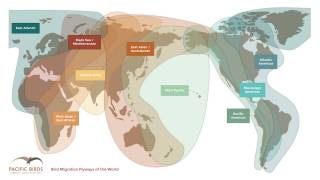Bird Flu in 20 Cats Cause Concern in Poland

Two new reports were recently published with information on additional sporadic avian influenza (bird flu) human cases and outbreaks in wild birds, poultry, and other animals such as cats.
On June 30, 2023, the European Centre for Disease Prevention and Control (ECDC) confirmed Poland's Chief Veterinary Officer of Poland announced that about 20 samples from domestic cats from different cities have tested positive for A(H5N1) influenza virus.
The director of the National Veterinary Institute in Puławy, Poland, stated that "they have detected two mutations that indicate that the A(H5N1) virus is evolving to multiply more easily in mammals."
The ECDC stated several uncertainties regarding the source of infection, the potential of feline-to-feline and feline-human transmission of the particular A(H5N1) influenza virus strain, and the severity of the disease.
Poland's authorities advise pet cat owners to prevent contact of their cats with other animals or objects from outside the homes and enhance hygiene measures.
And the statement also mentions the need to isolate any suspected cases from other pets due to potential shedding from the gastrointestinal tract.
Furthermore, there are too many uncertainties at this stage to properly assess the risk to the general public. And no human cases have been reported related to this event in Poland.
Separately, the U.S. Centers for Disease Control and Prevention (CDC) published an updated Technical Report on June 30, 2023.
The CDC confirmed it is actively working on the domestic situation with current clade 2.3.4.4b HPAI A(H5N1) viruses associated with infections in wild birds and poultry outbreaks, including conducting surveillance among people with relevant exposures.
And we are preparing for the possibility that these HPAI A(H5N1) viruses gain the ability for increased transmissibility to people.
The CDC continued to say despite the panzootic nature of highly pathogenic avian influenza (HPAI) A(H5N1) viruses in wild birds and poultry, only a small number of sporadic human cases of A(H5N1) have been identified since 2022.
Nearly all reported human cases since 2022 were associated with recent poultry exposures, and no instances of mammal-to-human or human-to-human transmission of the HPAI A(H5N1) virus have been identified.
In a few cases, the source of exposure to the HPAI A(H5N1) virus was unknown.
To date, HPAI A(H5N1) viruses are currently circulating in birds and poultry, with spillover to mammals, and those that have caused human infections cannot easily bind to receptors that predominate in the human upper respiratory tract.
Therefore, the current risk to the public from HPAI A(H5N1) viruses remains low.
However, continued sporadic human infections are anticipated because of the wide global prevalence of HPAI A(H5N1) viruses.
While U.S. flock outbreaks have declined substantially during the spring and summer months of 2023, the ongoing global circulation of HPAI A(H5N1) viruses in wild birds, their ability to spread along migratory flyways and rapidly evolve warrants comprehensive surveillance of these viruses in wild birds, poultry, mammals, and people worldwide, wrote the CDC.
Previously, the U.S. government has financially supported the development of avian influenza (bird flu) vaccines. As of June 2023, about 20 million H5N1 and 12 million H7N9 vaccines were available in the U.S. National Strategic Stockpile.
And the U.S. FDA approved the Audenz™ (aH5N1c) cell-based vaccine in 2020.
Unfortunately, the CDC says annual flu shots are unlikely to protect people during bird flu pandemics.
Our Trust Standards: Medical Advisory Committee
























